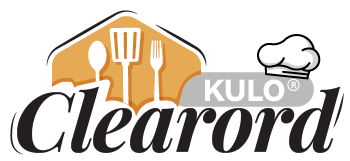Purists will tell you that grilling with charcoal is the only way to go. Here’s what you need to know in order to do it successfully.

The smoky flavor you get from grilling with charcoal is unmatched and purists will tell you it’s the only way to go. Grilling with charcoal takes a bit more expertise and know-how than grilling with propane—and that’s where we come in. We’ve created this quick explainer to teach you how to grill with charcoal. It covers the main types of charcoal, how to clean up the ashes, and more. You’ll be cooking with, um, charcoal in no time.

1. It doesn’t really matter what type of charcoal you pick.
Charcoal grills use charcoal as fuel. You knew that. Something you might not have known: Charcoal is wood that’s been burned at super high temperatures in a low oxygen environment. You’ll generally find two different types of charcoal—briquette and lump. Some say that lump is better because it creates less ash. Others say briquette charcoal is easier to measure and light. It’s mostly a matter of preference and you can’t go wrong either way. There’s also flavored charcoal, but we find it rather unnecessary.

2. A chimney starter will be your best friend.
You can light a charcoal grill without a chimney starter, but the process will be a lot easier if you have one. (The right grilling tools are always going to be key.) If you don’t have one, stack your charcoal on top of newspaper that’s been dabbed with oil and crumpled up into a ball. To use a chimney starter, tuck that oiled newspaper in the bottom of the device, set it in the grill, and fill it with charcoal. Then, light the paper on the bottom and let the charcoal catch fire before you empty the chimney starter out onto the lower grate. Be patient: This process can take 30 to 40 minutes!
3. It’s important to preheat the grill.
Speaking of time: After lighting the grill, you need to give it time to preheat. Cover the grill and let the charcoal heat for at least 15 minutes. When you go back to check on things, the charcoal should look gray and ashy.

4. You’ll want to adjust the vents.
Charcoal grills usually have two sets of vents—one on the lid and one on the bottom of the grill. These vents control the airflow in your grill, which in turn, affects how the charcoal burns and the temperature inside the grill. Keep them open when lighting and preheating the grill. If you find that your food is cooking too quickly, close the vents a bit.
5. Direct heat is for burgers. Indirect heat is for ribs.
There’s direct heat and indirect heat. Direct heat means you’re cooking the food right on top of the heat source. (Read: the flames.) Indirect means you’re cooking the food a little off to the side of the heat source. Hot dogs, burgers, steaks, and chicken breasts will do well over direct heat because they tend to have a quick cook time. Things like ribs, vegetables, and whole fish are better off over indirect heat.

6. Keep the lid closed as much as possible.
When you open the lid to a charcoal grill, you give the coals extra oxygen and that can cause them to burn hotter. And then your food could burn! If you’re grilling anything more ambitious than the standard hot dogs and hamburgers, try to keep the lid closed as much as possible. Additionally, it’s always a good idea to use a thermometer to check the internal temperature of meat and fish.
7. You need to clean the grill after every use.
After every grilling session, it’s important to clean the grates and the leftover ashes. (You don’t want your food to taste like last night’s meal and ashes left at the bottom of the grill can cause corrosion.) Let the grates cool and use the Cold Clean Grill Brush to scrape off burnt-on bits. When the ashes are cool, the Coal Shovel and Rake with Grate Lifter can help you scoop out every last bit. Fun fact: The shovel can also come in handy if you need to lift the grates and add more charcoal at any point.
Ready to get cooking? First, check out these tips for grilling for a crowd.

